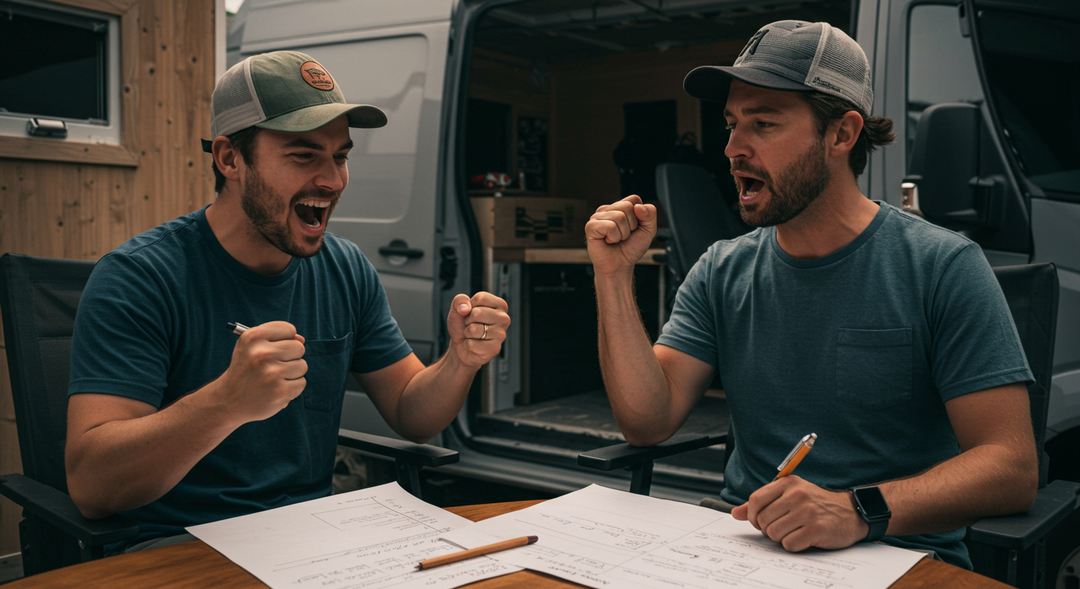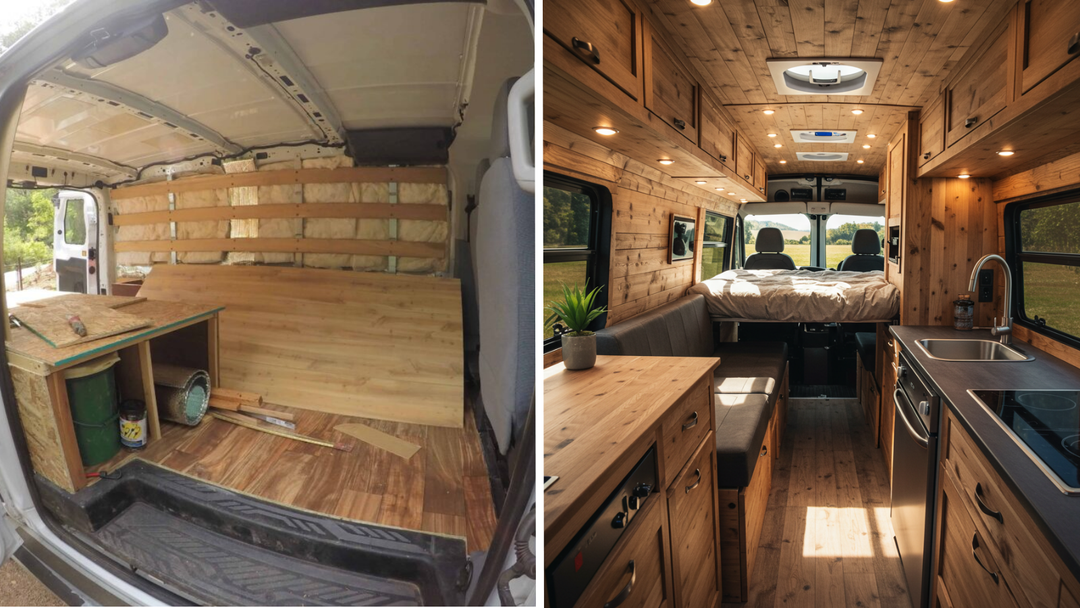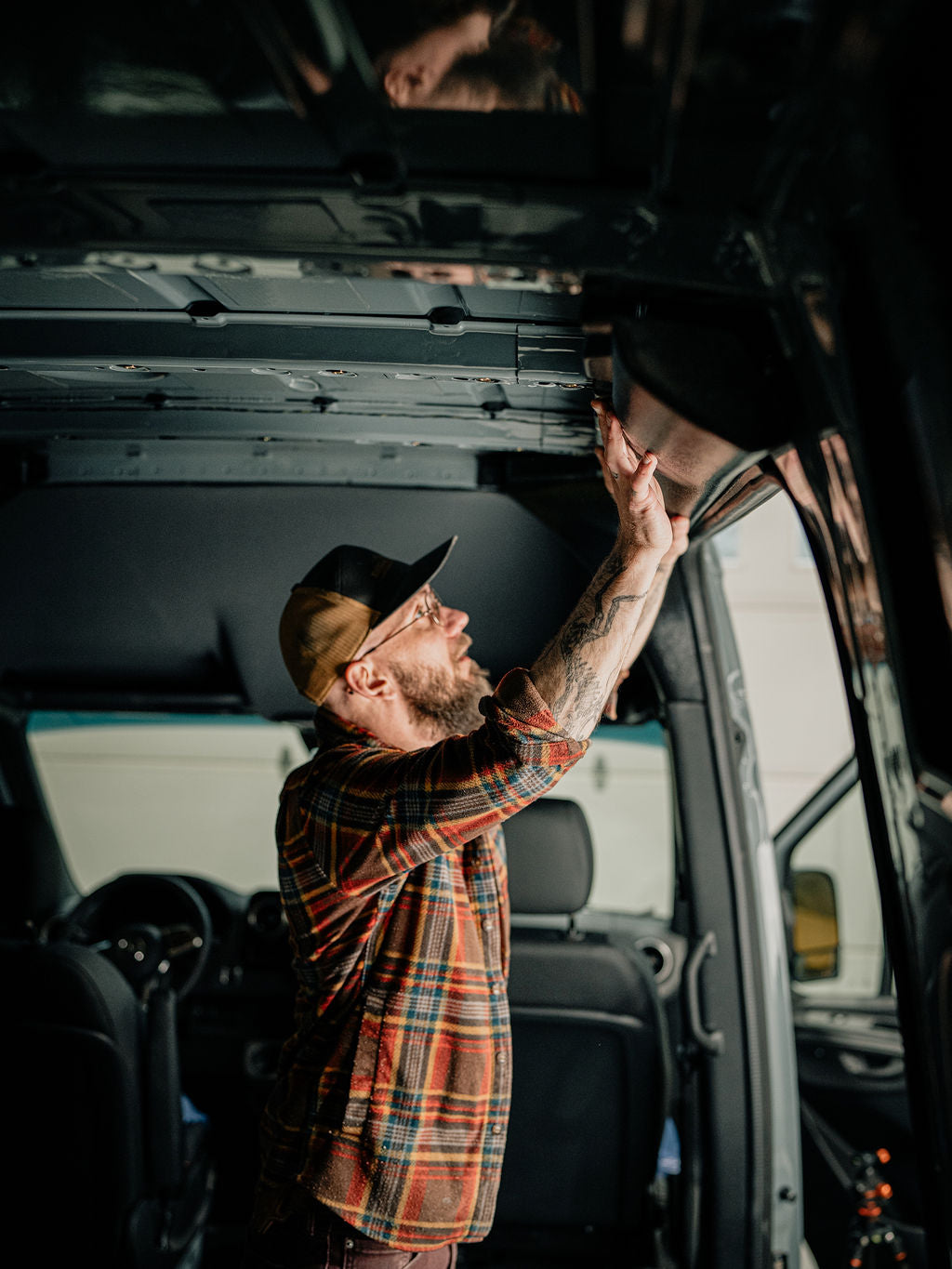What to Use for Van Wall Panels?
Embarking on a van conversion project is an exciting endeavor that allows you to transform a regular vehicle into a comfortable and functional living space on wheels. When it comes to wall panels in van conversions it is all about choices. The right materials can enhance the durability, insulation, and aesthetics of your camper van. In this blog post, we will explore various options for van wall panels, including the best wall material for van conversion, DIY van interior panels, insulation considerations, and the importance of a reliable van floor. Let's dive in and discover the perfect materials for your van conversion project.
What is the Best Material for Van Wall Conversions?
¼” Plywood is a popular choice for van wall panels due to its affordability and flexibility. Variation in size is typically ¼” to ¾” panels. Other woods include maple, birch, knotty pinewood, and bamboo. However, other materials, such as lightweight composite panels or aluminum sheets, offer increased durability and weight reduction. Consider your budget, desired aesthetics, and insulation requirements when selecting the best material for your van conversion. It is always a good idea to research other custom builds to see what you like! The best material to line your campervan is either wood or composite panels over good insulation, like havelock wool. Whether you opt for plywood, composite panels, or other materials, prioritize strength and durability. Additionally, consider the installation process and whether the chosen materials allow for easy customization and access to wiring and plumbing.
Camper van walls must withstand the rigors of the road and have proper mounting capabilities for cabinetry or modular pods. We like to use bamboo and more expensive wood for surfaces and cabinetry.

For more on wall panels and materials see our blog about van interior panel kits.
DIY Van Interior Panels
DIY Van Interior Panels make save a lot of time in your build and have improved to be great quality for a first time builder. If you're up for a DIY project, you could create your own panels with carpentry or invest in a DIY van wall kit. If you create your own, start with a template, such as a Ford Transit wall panel template, to ensure accurate measurements and a professional finish. Experiment with materials like plywood, lightweight composites, or even repurposed materials to match your desired aesthetic and functionality. You could even wrap these panels with marine vinyl to add color.
If you are building a partition in your van, I would highly recommend ordering a DIY partition kit from another builder. These are extremely challenging to align with the floors, walls, and ceiling.
Van Insulation:
You can insulate and clad a van by leaving some space between the paneling and the frame of the vehicle. 6-8 Mil plastic sheeting can be used for a vapor barrier but is not always advised as it can cause the walls or floor not to breathe. A foil moisture barrier is another term for sealing the van from condensation. For insulation, consider using a combination of materials, such as foam insulation boards or spray foam. For cheap insulation consider 3m thinsulate van insulation. We use natural havelock wool, which can be more expensive, but it is environmentally friendly and makes for great insulation. Whichever you may choose professional van insulation ensures that your van remains cozy in cold weather and cool in hot climates.

Campervan Vinyl Wall Covering and Wall Lining:
Campervan vinyl wall coverings and wall linings offer a practical solution for protecting your van walls while adding a touch of style. Vinyl coverings are moisture-resistant, easy to clean, and available in a wide range of colors and patterns. They provide a finished look and can be applied directly over plywood or other wall panel materials.
For more information on campervan fabric and vinyl wall coverings and campervan upholstery read our blog here.
Conclusion:
Choosing the right materials for your van wall panels is a crucial step in creating a functional and visually appealing living space on wheels. Consider factors such as durability, insulation, customization options, and personal style when selecting the best wall material for your van conversion. Whether you opt for plywood, composite panels, campervan vinyl wall coverings, or knotty pine wood paneling, each choice contributes to the overall comfort and aesthetics of your mobile home. Remember to prioritize insulation for year-round comfort and pay attention to the foundation of your space—the van floor. With careful consideration and creativity, you can achieve a successful van conversion that reflects your unique style and accommodates your nomadic adventures.





